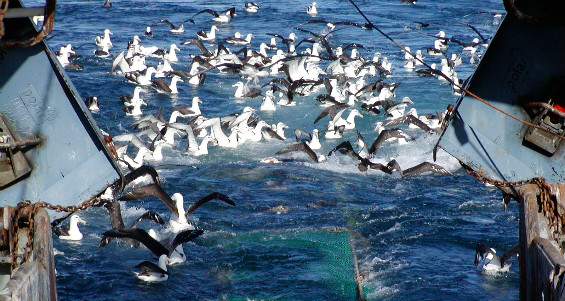The ultimate purpose is to ensure the available knowledge on seabird biology and ecology is adequate to understand at-sea threats and to minimise their effects on seabirds. The conservation outcome will be DOC can meaningfully engage in management processes to minimise and mitigate the full range of at-sea threats to seabirds.
The prioritisation framework will collate existing information relevant to risk assessment in order to identify the greatest threats to seabirds. It will identify and prioritise gaps in current knowledge limiting our understanding of at-sea threats, so future research can be focussed on these areas. The framework will include the tools required to facilitate expert guidance on the full range of threats to seabirds, and seabird susceptibility.

An example of an at-sea threat to seabirds: albatross flock around a trawler
Framework outputs
Research prioritisation
Once the risk assessment tool has been populated with reviewed inputs on seabird biology, it can be used to prioritise research gaps. This will be done by assessing how the current uncertainty around each input parameter influences our ability to project population trajectories. This will allow the prioritisation of research required to improve our understanding of population dynamics, and thus the potential effects of different threats. DOC will work with a range of partners to facilitate and promote these priority research programmes.
Seabird threats prioritisation
Once the range of threats to any given seabird, and their potential impact, have been identified, a range of threat scenarios will be developed. These scenarios will be compared using the risk assessment tool to quantify their effect on population trajectory. This will allow the prioritisation of threats, and guide DOC’s work to engage on the management and mitigation of those threats